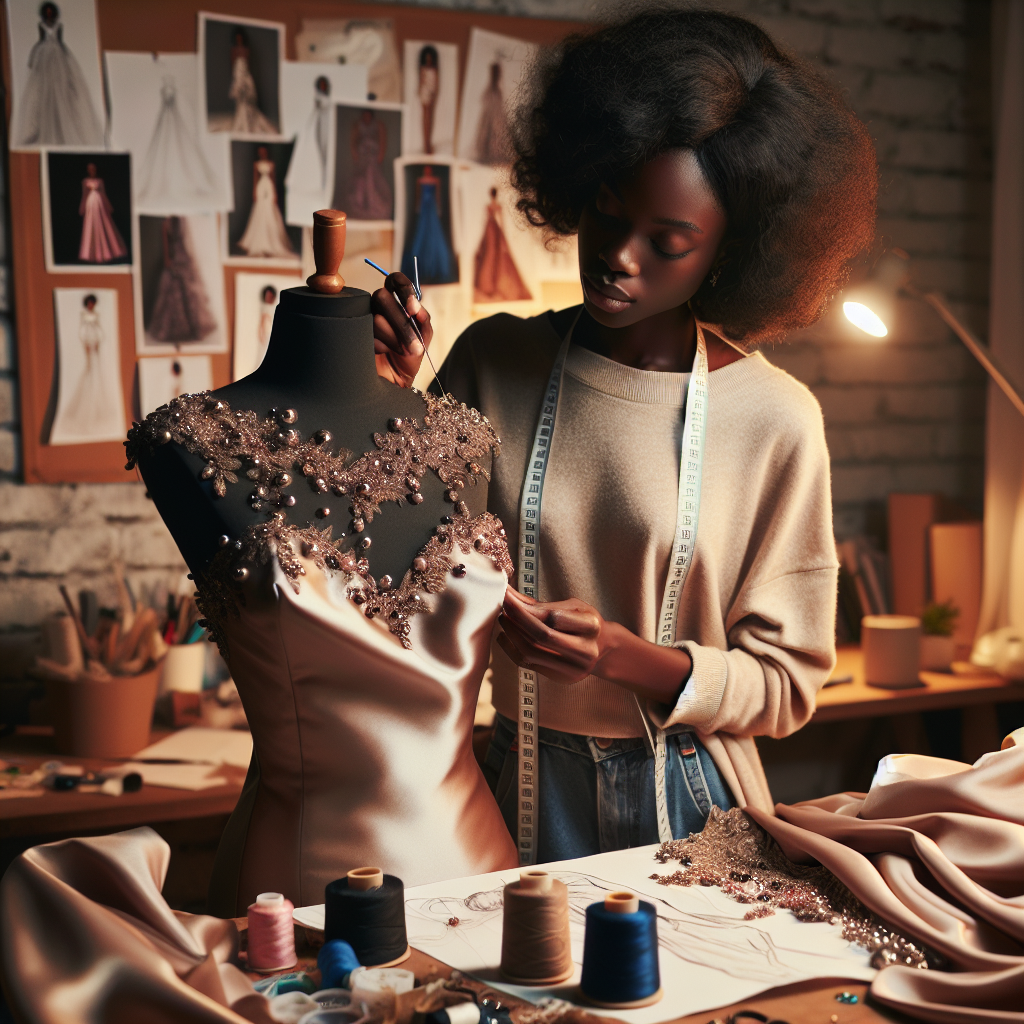The world of fashion is a captivating realm. It's a space where creativity meets commerce, and artistry intertwines with business acumen.
At the heart of this vibrant industry are fashion designers. They are the visionaries who translate ideas into wearable art.
Yet, the journey from runway to retail is not a straightforward path. It's a complex process that requires a blend of creative genius, strategic thinking, and a deep understanding of the market.
This article delves into the world of fashion designers. It explores their role, the creative process, and the strategies they employ to succeed in a competitive landscape.
Whether you're an aspiring fashion designer, a fashion student, or simply a fashion enthusiast, this article offers valuable insights. It provides a comprehensive view of the fashion industry, from the drawing board to the retail floor.
The Role of a Fashion Designer in the Industry
Fashion designers are the creative minds behind the clothes and accessories that define our style. They are responsible for conceptualizing and creating designs that reflect current trends and their unique artistic vision.
Beyond the creative aspect, fashion designers also play a crucial role in the business side of the industry. They must understand their target market, manage production processes, and navigate the retail landscape. In essence, they are the bridge between the world of art and commerce in the fashion industry.
The Creative Process: From Inspiration to Sketch
The creative process of a fashion designer often begins with inspiration. This can come from various sources such as art, culture, nature, or even a simple fabric swatch. The designer then translates this inspiration into a tangible concept.
The next step is sketching. Using their artistic skills, designers create detailed drawings of their envisioned designs. These sketches serve as the blueprint for the final product, outlining the shape, style, and details of the garment.
This process, from inspiration to sketch, is a testament to the designer's ability to transform abstract ideas into wearable art. It's a crucial part of the fashion design journey.
Understanding Fabrics, Colors, and Trends
A fashion designer's work is not just about sketching designs. It also involves a deep understanding of fabrics, colors, and trends. The choice of fabric can significantly impact the look and feel of a design. It can dictate the drape, texture, and overall aesthetic of a garment.
Colors, too, play a vital role. They can evoke emotions, set the mood, and even influence purchasing decisions. Designers must have a keen eye for color and understand how to use it effectively in their designs.
Staying abreast of fashion trends is also crucial. Designers need to anticipate what consumers will want to wear in the future. They must balance their unique vision with market demands to create designs that are both innovative and commercially viable.
The Journey from Sketch to Runway
Once a design is finalized, the next step is to bring it to life. This involves pattern making, draping, and sewing. The designer works closely with a team of skilled artisans to ensure the garment is constructed to their exact specifications.
The culmination of this process is the runway show. This is where the designer's vision is presented to the world. It's a high-stakes event that can make or break a designer's reputation. The runway show is not just about showcasing designs, but also about telling a story and creating a memorable experience for the audience.
The Impact of Fashion Weeks and Critics
Fashion weeks are pivotal events in the fashion calendar. They provide a platform for designers to showcase their latest collections to a global audience. These events attract industry insiders, celebrities, and media, amplifying the reach of the designer's work.
Critics play a significant role in shaping a designer's reputation. Their reviews can influence public perception and buyer decisions. A positive review can propel a designer to stardom, while a negative one can be a setback.
However, criticism can also be constructive. It can provide valuable insights for designers to refine their work and align better with market expectations.
Celebrity Endorsements and Designer Success
The power of celebrity endorsements in the fashion industry cannot be overstated. When a celebrity wears a designer's creation, it instantly elevates the brand's visibility and appeal. This can lead to increased sales and brand recognition.
However, securing a celebrity endorsement is not a straightforward process. It requires strategic networking, relationship building, and often, a significant financial investment. Designers must ensure that the celebrity aligns with their brand image and can effectively represent their designs.
Despite the challenges, a successful celebrity endorsement can be a game-changer for a fashion designer. It can open doors to new opportunities and establish the designer as a significant player in the industry.
From Runway to Retail: The Challenges
The transition from runway to retail is a critical phase in a fashion designer's journey. It involves transforming high-concept designs into wearable, marketable pieces. This process can be fraught with challenges.
Designers must strike a balance between maintaining the artistic integrity of their designs and meeting the practical needs of consumers. They must also consider production costs, fabric availability, and manufacturing capabilities. These factors can significantly influence the final retail product.
Despite these challenges, successful designers are those who can navigate this complex process. They are able to create collections that are both artistically compelling and commercially viable.
Branding and Differentiation in Fashion Design
In the highly competitive fashion industry, branding is crucial. A strong brand identity can set a designer apart from the crowd. It communicates the designer's unique style, values, and vision to the target audience.
Differentiation is another key strategy for success. Designers must continually innovate to create unique, trend-setting designs. They must also stay true to their brand's identity, ensuring consistency across all collections and marketing efforts.
In essence, successful fashion designers are not just artists, but also savvy marketers. They understand the importance of branding and differentiation in establishing their place in the fashion industry.
Leveraging Social Media and Digital Marketing
In today's digital age, social media and online marketing are indispensable tools for fashion designers. They provide a platform to showcase their work, engage with their audience, and build their brand.
Designers can leverage platforms like Instagram, Pinterest, and Facebook to share their designs, behind-the-scenes content, and fashion shows. They can also use these platforms to engage with their followers, respond to comments, and even sell their products directly.
Moreover, digital marketing strategies such as SEO, email marketing, and influencer collaborations can significantly increase a designer's online visibility. These strategies can help attract potential customers, drive traffic to the designer's website, and ultimately boost sales.
Case Studies: Successful Fashion Designers' Strategies
Studying the strategies of successful fashion designers can provide valuable insights for aspiring designers. For instance, designers like Kate Crossword have leveraged their unique design style, strong brand identity, and strategic marketing to build a successful career in the fashion industry.
Moreover, many successful designers have embraced technology and sustainability, adapted to changing consumer demands, and continuously updated their skills and knowledge. These strategies have helped them stay relevant and competitive in the ever-evolving fashion industry.
Conclusion: The Continuous Evolution of Fashion Design
The role of a fashion designer is continuously evolving in response to changing consumer demands, technological advancements, and global trends. To succeed in this dynamic industry, designers must be adaptable, innovative, and business-savvy.
From conceptualizing designs to selling them in the retail market, the journey of a fashion designer is complex and challenging. However, with the right strategies, skills, and mindset, designers can thrive and make their mark in the fashion industry.










0 Comments